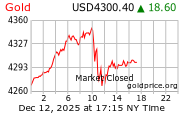This is one of perhaps several labeling variations on the bear market starting October 2007, it is my preferred view:

Most apply Elliott's observation that Fibonacci ratios are a useful way to anticipate to future wave lengths and coming trend reversals. Here is another method that Elliott never mentions, perhaps because fractals were a complete unknown when he discovered them in the late 1930's - 40's.
A useful thing about EWs, which is impossible using any other form of tech analysis, is that any unfolding structure can tell you where to divide previous patterns in a hunt for fractal equivalents to current conditions. That is, you can look for lower and higher degree blueprints of how human emotions are programmed to react in larger or smaller statistical samples. In my experience, this particular angle of EW analysis is never taught, but likely referenced by more experienced EWavers.
Such equivalencies are clues, and only clues, since the entire EW process is one of natural fractal branching, and as we see in all of nature's branching fractals, lightning bolts to fern leaves, none become perfect replicas as they scale. However, they should look similar, in a perfect world. This is both art and science. A tool in the box.
Shown below, in artistic purple, is one such fractal equivalency between degrees. It is of obvious relevance today:

The completion of this fractal equivalency was but one conforming reason that I called the beginning of next leg down in real time right here. Notice that I didn't bother to analyze the ABC subdivisions of each wave 4, because the fractal equivalency provided my empirical blueprint.
Moving along, one can then extrapolate a precise fractal position, between smaller and larger degrees:

One might notice that our current 5th wave appears to be half complete. If the fractal equivalency holds, and it might, the next Dow low should complete in the low to mid-7K's.
This is a minor disconnect with my near term Dow 6,500 forecast. That is because, in my experience, a 5th wave truncating short of the 3rd wave completion is rare, most likely an anomaly. One thing that was not rare in the initial lower degree 5 wave structure, was the 1 and the 5 waves both equating to a 10% loss. 1 and 5 typically match when wave 3 extends. That is another reason to expect a current bottom in the low to mid-7Ks.
That said, if you look at every other wave 5 in the structure, all of them extend below the end of the preceding 3. This is a strong bear:

And so, life unfolds...






Fascinating. I need to learn more about this. Can you recommend some books?
ReplyDeleteBob Prechter's site is an excellent EW resource, and his book is the only one I know of that simply reproduces Elliott's original works, word for word:
ReplyDeletehttp://www.elliottwave.com/books/rn_masterworks/default.aspx?code=oco
EW basics are here, registration is required:
http://www.elliottwave.com/club/members/tutorial/default.htm
I have no affiliation with the site, but I agree that EW analysis is a fundamentally important and useful tool to analyze markets and other natural phenomenon.
Good luck.
This should help..
ReplyDeletelifeboat
Hello FDR !
ReplyDeleteWhat about silver ?!
Do you expect silver will touch $5 near term( your prev. forecast)?
Thanks, Wazi.
FDR: I really like Elliot Wave Theory and technical analysis, so I hope you continue with these updates!
ReplyDeleteIt is also nice to see you apply it in your own style.
Thanks!
"What about silver ?!
ReplyDeleteDo you expect silver will touch $5 near term( your prev. forecast)?"
Hi Wazi,
Yes, both gold and silver have a lot of deflationary shedding to do. Silver is vulnerable since it is more of a hybrid precious--industrial metal than gold. On both counts, the short and long term picture is negative in my view.
:D
ReplyDeleteGreat stuff, any other tools such as predictive forecasting, candlesticking, general technical analysis, etc?
ReplyDelete